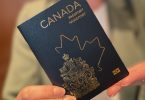Advertisements
Are you looking to work in Canada? This guide will help you understand the different types of work permits available and how to apply for one. We’ll cover everything you need to know, from eligibility requirements to the application process.
Advertisements
READ ALSO: FREE VISA CLEANER JOBS IN CANADA
What Are The Different Types Of Work Permits Available In Canada?
Two main types of work permits are available In Canada:
- Closed work permits
- Open work permits
Here’s a quick difference of the two types of work permits In Canada:
| Feature | Closed Work Permits | Open Work Permits |
|---|---|---|
| Employer Requirement | Can work for any employer in Canada | Tied to a specific employer |
| Job Offer Requirement | No job offer required | A valid job offer from the employer is required |
| LMIA Requirement | Does not require a Labour Market Impact Assessment | Requires an LMIA unless exempt |
| Flexibility | High flexibility; can change jobs without reapplying | Limited flexibility; must stay with one employer |
| Duration of Validity | Typically valid for a specific period (e.g., 1-4 months) | Valid for the duration of the employment contract |
| Common Eligibility Situations | Spouses of skilled workers, international students, refugees | Individuals with LMIA-based job offers |
What Are Closed Work Permits?
A closed work permit is tied to a specific employer. You can only work for an employer that has secured a Labour Market Impact Assessment (LMIA).
An LMIA is proof that no Canadian workers are available to fill the job you’re applying for. Here’s what you need to know:
- With a closed work permit, you can only work for one employer. If you want to change jobs, you’ll need to apply for a new permit.
- You must have a valid job offer from your employer before applying for this type of permit.
- The permit will outline the job you’re doing, where you can work, and how long you can stay in Canada.
However, this type of permit offers stability, but it’s restrictive because you’re tied to a single employer. If you’re someone who likes having a secure job plan, a closed work permit may suit you best.
READ ALSO: CANADA MARRIAGE VISA
What Are Open Work Permits?
Open work permits give you a lot more flexibility. With an open work permit, you can work for any employer in Canada, and you don’t need an LMIA or a specific job offer before applying.
What makes open work permits appealing is that you can switch jobs without having to apply for a new permit. This freedom allows you to explore different opportunities. But then, It’s not everyone that can get an open work permit.
They’re usually available under certain conditions, like if you’re the spouse of a skilled worker, or if you’re an international student who has just graduated from a designated learning institution.
If you like having the option to move between jobs or industries, an open work permit is the way to go. With that said, choosing the right work permit depends on your situation and goals.
If you want the stability of knowing exactly where you’ll be working, a closed work permit is probably best for you. But if you prefer the freedom to explore different job opportunities without being tied down, an open work permit is ideal.
Who Is Eligible To Apply For A Work Permit In Canada?
General Eligibility Requirements
To apply for a work permit in Canada, you need to meet some basic criteria:
1. Age:
You should be at least 18 years old. However, there are some exceptions for younger applicants.
2. Job Offer:
If you’re applying for a closed work permit, having a valid job offer from a Canadian employer is essential.
3. Proof Of Funds:
You need to show that you have enough money to support yourself while in Canada. This is particularly important if you’re applying for an open work permit.
4. Health And Security Checks:
You may be required to pass medical exams and background checks to ensure you do not pose any risk to the safety or health of Canadians.
READ ALSO: Welding Jobs in Canada
Eligibility For Closed Work Permits
If you’re applying for a closed work permit, there are some additional requirements:
Job Offer Requirement:
You must have a job offer from an employer who has obtained a Labour Market Impact Assessment (LMIA). The LMIA confirms that there are no Canadians available to fill the job.
Eligibility For Open Work Permits
Open work permits don’t require a specific job offer, and the eligibility criteria are a bit different. You may qualify for an open work permit if:
- Spouse of a Skilled Worker
- Recent Graduate
- Public Policy Programs
What Documents Do You Need To Submit For Your Work Permit Application?
Here are the required documents for your work permit application. Regardless of whether you’re applying for a closed or open work permit, there are a few key documents you will need:
- Valid Passport
- Recent Passport-Sized Photos
- Proof of Funds
- Application Form (IMM 5481)
- Payment Receipt
Documents For Closed Work Permits:
If you’re applying for a closed work permit, which ties you to a specific employer, you’ll need a few extra documents:
- Job Offer Letter
- Labour Market Impact Assessment (LMIA)
- Employer-Specific Conditions & Job Description
Documents For Open Work Permits:
For those applying for an open work permit, which allows you to work for any employer, there are specific documents to provide:
- Proof of Relationship
- Graduation Certificate
- Supporting Documents such as transcripts, letters from educational institutions, or other relevant paperwork that support your eligibility.
READ ALSO: Waiter and Waitress Recruitment in Canada
How Do You Apply For A Work Permit In Canada?
Here’s a step-by-step process to help you successfully go through the process.
Step 1. Select Your Work Permit Type
The first thing you need to do is figure out which type of work permit suits your situation. As we’ve said, there are two main types: open and closed work permits.
An open work permit gives you the freedom to work for any employer in Canada, while a closed work permit ties you to a specific job and employer.
Step 2. Gather Required Documents
Next, gather all the necessary documents. Here’s what you’ll likely need:
- Valid Passport
- Recent Passport-Sized Photos
- Proof of Funds
- Job Offer Letter
Step 3. Complete Your Application Form
Once you’ve gathered your documents, it’s time to fill out the application form. For most work permits, you’ll need the IMM 5481 form. Be sure to double-check your information for accuracy, any errors can lead to delays.
Step 4. Submit Your Application
You can submit your application online through the Immigration, Refugees and Citizenship Canada (IRCC) website.
Just be sure to follow the submission guidelines and pay any required fees. Once submitted, keep a copy of your payment receipt for your records.
Step 5. Biometrics Appointment
In some cases, you may need to provide biometrics. If this applies to you, book an appointment at a visa application center where you’ll provide your fingerprints and a photo. Make sure you attend this appointment in person.
Step 6. Wait For Processing
Processing times can vary depending on your country of origin and the type of work permit you’re applying for. This part of the process can take anywhere from a few weeks to several months.
Once your application has been processed, you’ll receive a decision from IRCC. If approved, follow any additional instructions provided to finalize your work permit.






